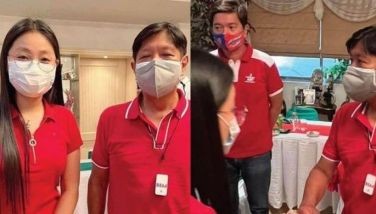Increasing number of combat casualties inspires improvement of Army hospital
MANILA, Philippines - The growing number of combat casualties of the Armed Forces of the Philippines’ (AFP) internal security operations has inspired the rapid improvement of the medical facilities of the Army’s hospital based in Taguig.
Fierce fighting between government forces and Abu Sayyaf bandits in Basilan about two years ago became a grim reminder of the importance of adequate medical facilities for the wounded soldiers.
Sgt. Rey Rasquero, who was one of the 10 soldiers wounded in action in the armed clashes in Tipo-tipo town, is now recuperating at the Fort Bonifacio General Hospital (FBGH).
“The Army hospital has been my home for almost two years now. I owe my life to the dedicated service of our medical personnel,” said Rasquero, a non-commissioned officer belonging to the Light Reaction Battalion.
His unit was tasked to reinforce the beleaguered troops of the 67th Marine Reconnaissance Company, which was engaged in heavy fighting against secessionist rebels.
Rasquero’s wife, Maria Theresa, has remained at his bedside to take care of him during his recovery. She is very thankful for the excellent services provided by the Philippine Army.
Upon his assumption as Army chief on July 23, 2010, Lt. Gen. Arturo Ortiz made the upgrade and renovation of the FBGH facilities his top priority. It was his way of honoring the heroism of the frontline soldiers who continuously put themselves in harm’s way in order to perform their mandated missions.
“Soldiers have simple needs and wants. As their over-all commander, I am making sure that the Army is able to provide what is due them, particularly their benefits and entitlements,” said Ortiz, a bemedalled combat officer and a living Medal For Valor awardee.
To make FBGH at par with most of the country’s hospitals, Ortiz jumpstarted the upgrading of medical equipment and the refurbishing of the hospital’s facilities.
A few months later, a better hospital building emerged, with its clean and refurbished comfort rooms, comfortable wards and excellent ventilation.
The newly refurbished hospital prides itself with new medical equipment with diagnostic and therapeutic capability, radiology services and laboratory services, among others. Its Heroes Ward is also equipped with air conditioning units and TV sets, affording recuperating soldiers with a comfortable stay on their way to full recovery.
 Combat casualty Sgt. Rey Rasquero undergoes regular therapy and medication at the Fort Bonifacio General Hospital.
Combat casualty Sgt. Rey Rasquero undergoes regular therapy and medication at the Fort Bonifacio General Hospital. To address the usual problem of medicine shortages, Ortiz approved the increase of the hospital’s budget for medical procedures that are carried out in another hospital’s specialized facility.
FBGH also saw the assignment of additional personnel that would address the manning requirements of the Department of Health (DOH).
Col. Mariano Mejia, FBGH commanding officer, said further improvement of the hospital is still underway. Among the work that still needs to be done, he said, is the renovation of the basement, improvement of the records section, kitchen mess and supply room.
Aside from the physical transformation of the hospital and the acquisition and upgrade of medical equipment, FBGH can also boast of its competent personnel.
Currently, it is composed of 14 military officers, nine civilian doctors, 24 consultants, 69 enlisted personnel and 173 civilian employees.
The FBGH operates a 200-bed secondary level hospital that is DOH licensed and Philippine Health Insurance Commission (PHIC) accredited.
Serving those who serve
The hospital operates major fields of clinical services to include medical, surgery, ob-gyne and pediatrics.
It offers ambulatory services including in/out patient care, physical examinations, family planning, immunization and specialty clinics, X-ray, sonography, endoscopy, laboratory, ECG, CSR, dietary, medical record service and ambulance service.
It likewise provides services in other specialties such as orthopedics, urology, ophthalmology, neuro-psychiatric service, physical medicine and rehabilitation. As part of the Army’s community outreach projects, the hospital also conducts civil action activities.
Unlike before when services are limited due to the shortage in equipment and able personnel, FBGH can now perform major operations/surgery and various medical examinations.
The upgrade in laboratory equipment made it possible to cater to more patients, soldiers, dependents and civilians, availing of ultrasound and routine laboratory exams to include complete blood count (CBC) and urinalysis.
The FBGH is also responsible for processing the annual physical examinations of soldiers and candidate soldiers; and augmentations to screening and psychological debriefing teams AFP-wide and UN post-deployment laboratory screening team. It was able to process about 3,757 physical examinations last year.
Rasquero is still undergoing treatment and therapy to include electric shock (ES), ultrasound, stretching and biking.
The FBGH was activated on Dec. 5, 1959 as a 50-bed Army Station Hospital Mckinley, and was renamed Fort Bonifacio General Hospital on June 11, 1986.
Throughout the years, FBGH adopted to the changing times and technology, thereby providing continued first class service to Filipino soldiers.
- Latest
- Trending




























